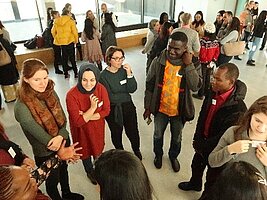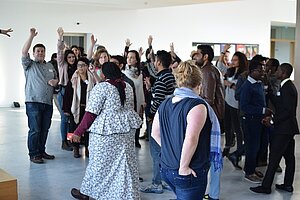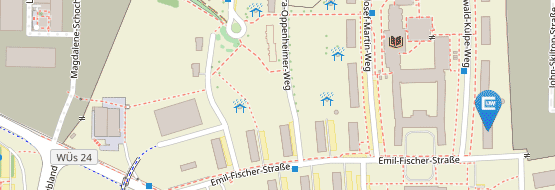Things that we share


Aim of the method/strategy
- Creating a safe, appreciative atmosphere in multicultural, diverse learning groups.
- Enabling participants to understand that they have more in common with their peers than they might initially realise.
- Enabling participants to connect to groups and trainers.
Setting
The setting is a classroom with mobile chairs and tables.
Type and name of the course, curriculum, number of students involved in the teaching practice:
‘An intercultural-didactical training for instructors and volunteers working with refugees’; project ‘Curriculum interculturALE’ (https://www.dvv-international.de/en/materials/curriculum-interculturale/). This method can be applied in groups with up to 20 people.
Description of the method/strategy
Participants and trainers write down three things about themselves that the others do not yet know. The participants walk around the room and look for someone else with the same characteristics (it can be up to three different people). People introduce their characteristics in front of everyone and add who they share something with.
Materials required
- flipcharts
- markers
- cards
- coloured crayons
Origin and theoretical framework
The method refers to ‘multicollectivity’ as an intercultural approach (Stephanie Rathje 2014, stefanie-rathje.de/stefanie-rathje-publications/).
Possible variations
- Variation: Divide participants into groups of three or four. Tell the newly-formed groups that their assignment is to find ten things that they have in common with every other person in the group. Tell participants that one person must take notes and be ready to read their list to the whole group upon completion of the assignment. Then, each group shares their whole list in the plenary.
- Context: We used this method in intercultural training-of-trainers and in courses for refugees.
Other examples where you think it could be used
The method can be used in every context where you have a new learning group in a multicultural, diverse setting.
Contact persons
Thomas Lichtenberg (Lichtenberg@dvv-international.de)
Johann Heilmann (Heilmann@dvv-international.de)


